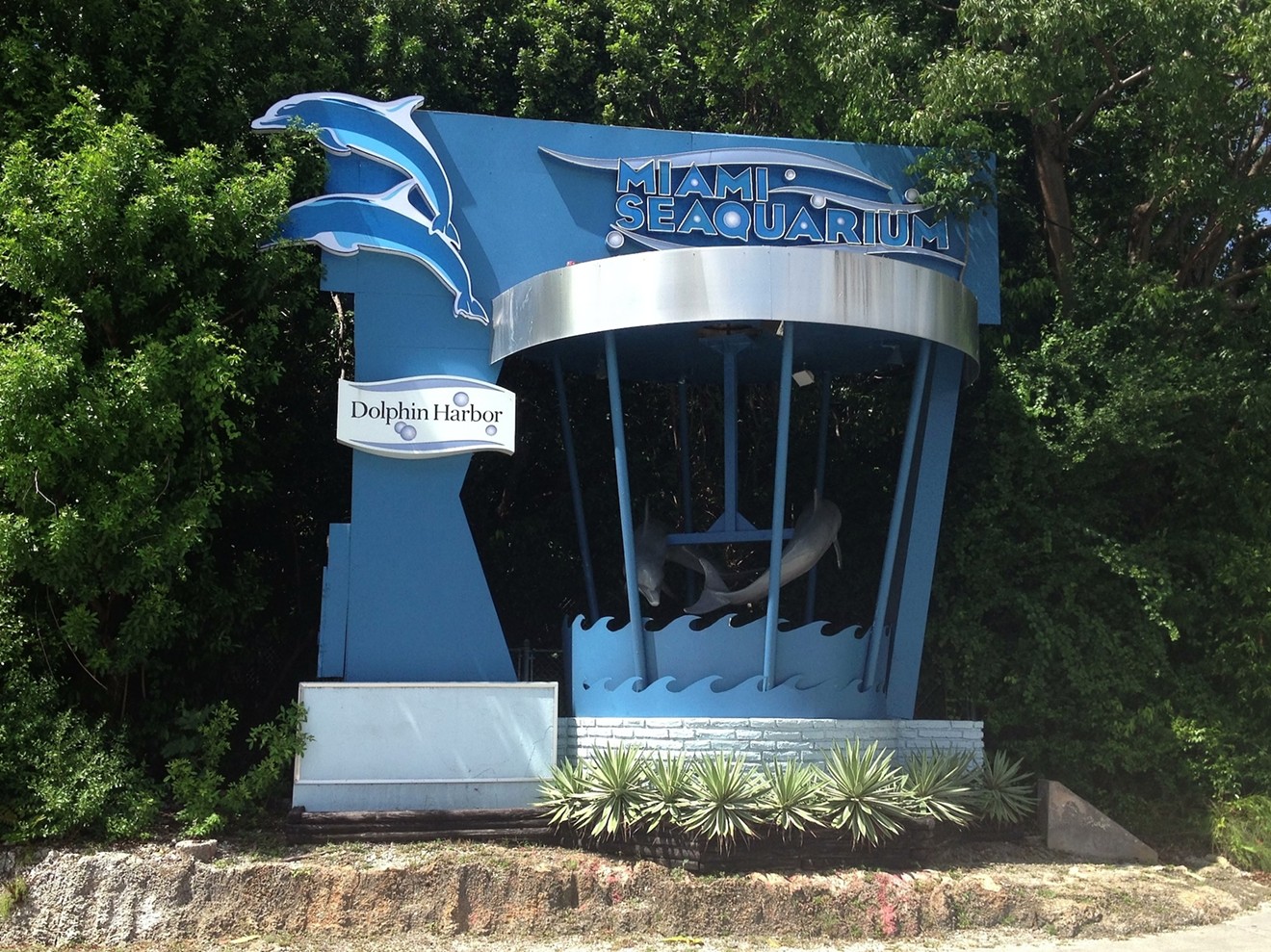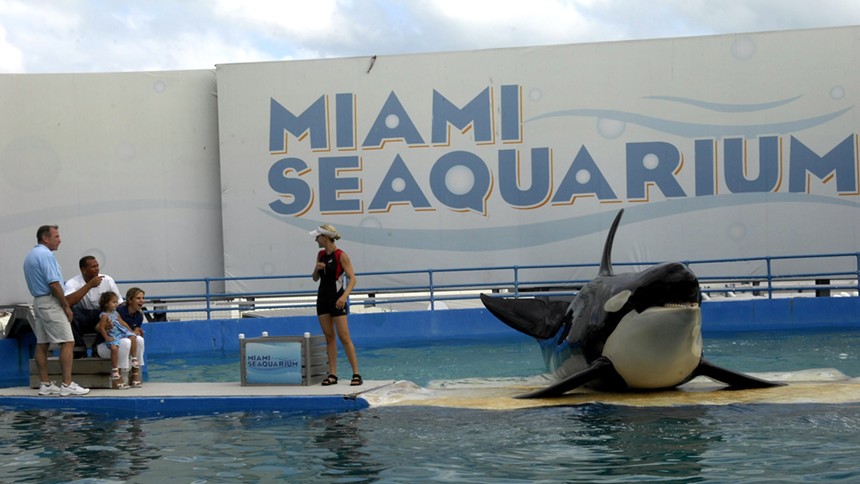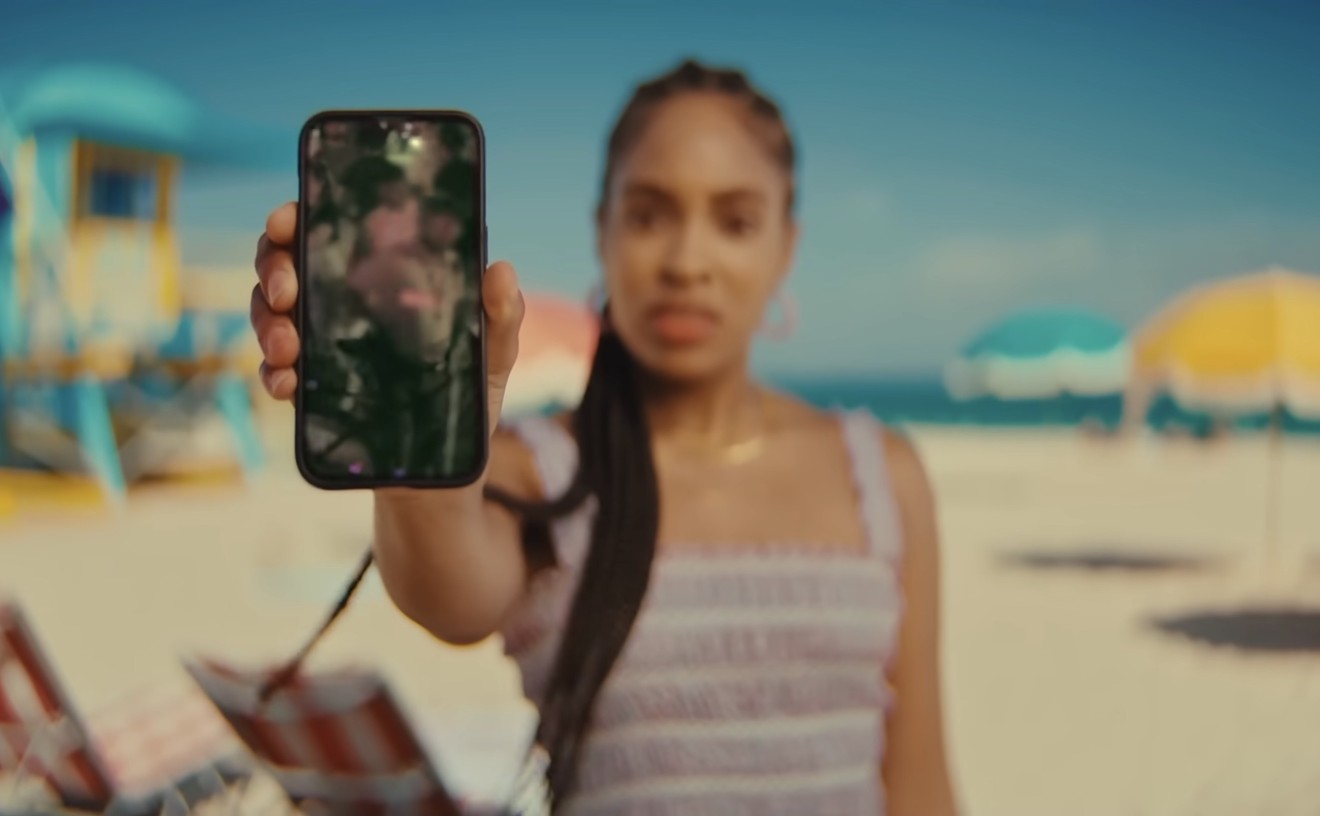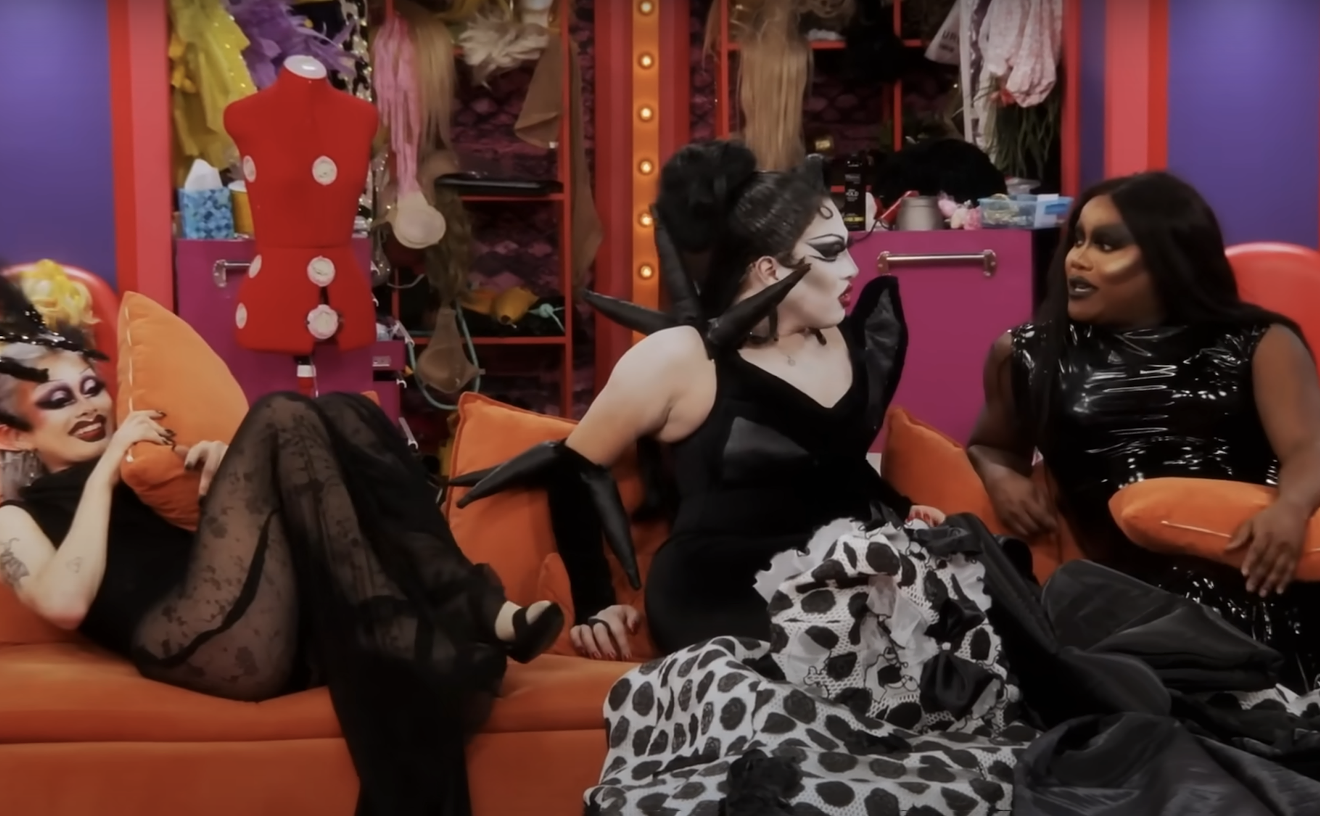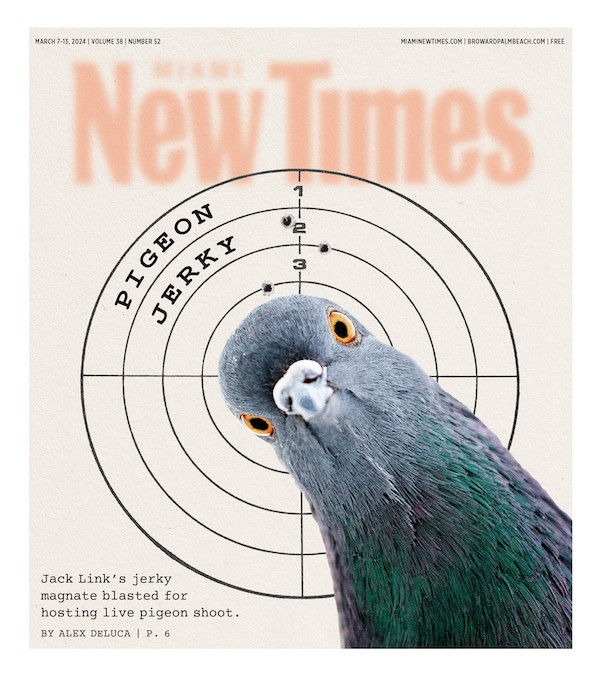Miami-Dade County's chief operating officer Jimmy Morales gave the owner, the Dolphin Company, until April 21 to vacate and turn over the property.
The original story follows below.
It's January, and three dolphins zip across the lagoon that serves as their underwater pen at Miami Seaquarium. Over the loudspeaker, an announcer introduces the pod, Zo, Ares, and Flipper, the last of whom is named after the dolphin from the eponymous television series filmed at the park that aired on NBC from 1964 to 1967.
During the brief, late-afternoon show, the trio takes turns bopping beach balls into the pastel-pink, green, and blue bleachers that surround the lagoon. They leap over a yellow rope suspended several feet above the water for their grand finale. But only a sparse crowd is on hand to cheer on the acrobatic sea mammals. Fewer than four dozen spectators, a mix of tourists and some locals enjoying the long Martin Luther King Jr. Day weekend, are scattered throughout the bleachers.
These days the dolphin show is among the few remaining acts keeping Miami Seaquarium afloat. "It's really a shame how run down the place looks," Raul Arrarte, a visitor from Las Vegas who lived in Miami during the 1980s and '90s, tells New Times. "It's nearly destroyed."
Dressed in a baseball cap, polo shirt, khaki shorts, and boat shoes, Arrarte is on vacation with his adult son and second wife. He recalls bringing his son and two other children to the longstanding attraction when they were kids.
"This used to be a great place," Arrarte adds. "You could spend an entire day watching the dolphins, the sea lions, and the orca whale perform. She would leap out of the water and then — boom! — everyone in the bottom rows got drenched.""This used to be a great place. You could spend an entire day watching the dolphins, the sea lions, and the orca whale perform."
tweet this
The next time he comes to Miami, Arrarte says, he would not be surprised if condominiums have replaced the 38-acre attraction. "It's not well-attended, it's falling apart, and the animals look like they are in poor health," he points out. "I found out that the orca died right before coming here. I don't see much of a future for the Seaquarium."
After decades of neglect by various owners, Miami Seaquarium is on the Magic City's list of endangered landmarks. Miami-Dade Mayor Daniella Levine Cava recently signaled that she wants to evict the attraction from the county-owned site the park has called home since 1955.
Officials for the Dolphin Company, which took over Miami Seaquarium from Palace Entertainment in 2022, did not respond to New Times' requests for comment for this story.
Troubled From the Start
When it opened on Virginia Key, the Miami Seaquarium was one of the first marine-life parks in the United States. (SeaWorld, the marine animal park brand best known to Americans, didn't debut until 1964.) In 1960, it was purchased by Coral Gables-based Wometco Enterprises, overseen by CEO Mitchell Wolfson Sr. until his death in 1983, after which Arthur H. Hertz took over.Under Wometco's stewardship, the Seaquarium expanded into the attraction it is today, with the controversial orca show as its centerpiece. Hugo, who was captured in 1968 at Vaughn Bay, near Puget Sound, Washington, was brought in as the park's first orca. According to the animal-rights nonprofit Dolphin Project, Hugo was placed in a small pool meant for the manatee exhibit for two years while a larger tank was constructed.
Then, in 1970, at Penn Cove in Whidbey Island, Washington, a juvenile whale named Lolita (also known as Tokitae) was captured and flown to South Florida to join Hugo at the recently completed Whale Bowl. The two orcas performed side by side for the better part of a decade until 1980, when Hugo died of a brain aneurysm. Despite hopes that Lolita and Hugo would produce offspring in captivity, that never came to pass. There was ample evidence that Hugo never really adjusted to life in captivity, including reports that he regularly and intentionally bashed his head against the wall of his tank.
The orca shows continued with Lolita as the sole star. In 2005, when orcas from Puget Sound were listed on the U.S. endangered species list, animals held in captivity were excluded from the law's protections.
Then came the public backlash ignited by the 2013 documentary Blackfish. Though the film centers on Tilikum, the orca at SeaWorld Orlando, audiences' appetite for live shows featuring orcas like the one at Miami Seaquarium soured.Audiences' appetite for live shows featuring orcas soured after the release of the 2013 documentary Blackfish.
tweet this
The following year, Wometco sold the Seaquarium to Palace Entertainment, a North American subsidiary of Spanish amusement park giant Parques Reunidos. In 2021, Palace reached an agreement to sell the facility to Mexico-based park operator the Dolphin Company.
In the meantime, the park had become a popular target for animal activists, especially after Tilikum died in 2017. People for the Ethical Treatment of Animals (PETA) and other organizations repeatedly called on the U.S. Department of Agriculture (USDA) and Miami-Dade County to shut down the park and return Lolita to her native waters.
On August 18, 2023, still in captivity, Lolita died. In the wild, female orcas have an average life expectancy of 50 years but can live to be 80 to 90. At the time of her death, Lolita was estimated to be 57 years old.
A String of Deaths
The death of Lolita crystallized the seriousness of the Seaquarium's gradual decline and its apparent affect on the wildlife housed there. Prior to Lolita's passing, five bottlenose dolphins and one infant California sea lion died at the facility over the 13-month span from March 2019 to April 2020, federal records released by PETA show.Since then, the Seaquarium's troubles have become increasingly turbulent. In early December of 2023, the U.S. Fish & Wildlife Service helped transport three Seaquarium manatees to other animal attraction parks in Florida after aerial footage of the deteriorating tanks in which they were kept went viral.
Another marine mammal under the park's care had died earlier in the year. Sundance, one of the oldest dolphins to live in captivity at the park, died two days after she stopped eating and had been forced to perform shows, WPLG-TV reported.
Before Sundance died, a USDA inspection report found that she was among four Miami Seaquarium dolphins "showing signs of gastric distress and abnormal samples" by an attending veterinarian. The report noted that the vet diagnosed that "several dolphins may have ulcers and possibly foreign bodies" that required endoscopic procedures that the Miami Seaquarium had not performed.
A November 2023 USDA inspection catalogued rusted, worn-down animal enclosures and coliform bacteria festering in sea lions' and flamingos' living spaces. One of the manatees that was subsequently removed from the Seaquarium had a severe skin condition, according to the report.
The rising body count, along with the unresolved animal-welfare violations, may well be the last straw for Levine Cava. In a January 21 letter to Dolphin Co. President Eduardo Albor, the county mayor warned that Miami-Dade is "reviewing all necessary actions to pursue termination" of Miami Seaquarium's lease, which does not expire until 2044.
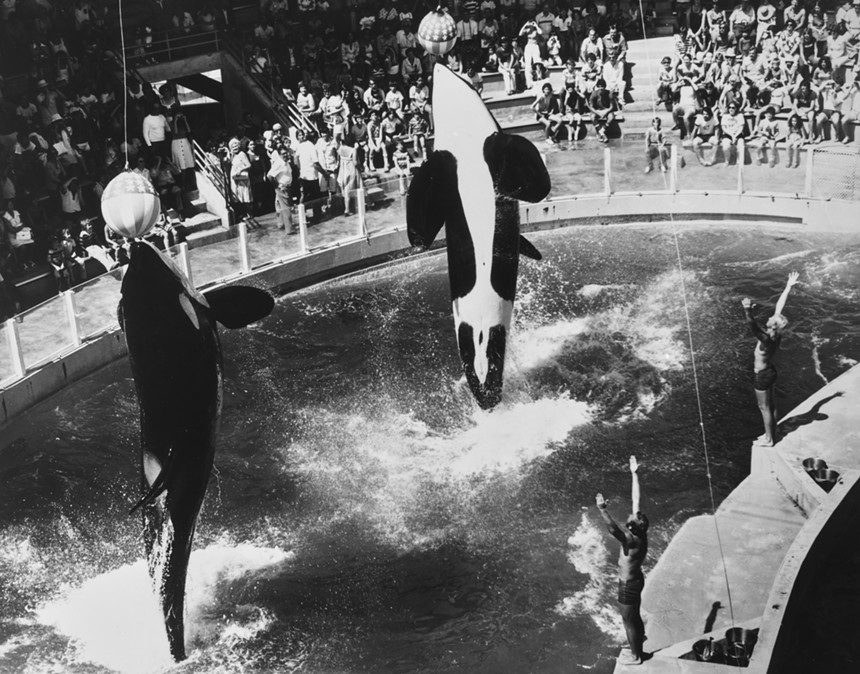
Lolita and Hugo perform at the Miami Seaquarium in 1978.
Photo by Central Press/Hulton Archive/Getty Images
Under the lease agreement, Dolphin Co. pays the county 8 percent of the park's "net book profits" with a $1.5 million annual cap. Terminating the lease would require a vote by the Miami-Dade County Commission.
Falling Apart
During New Times' January visit, the park's derelict conditions are hard to overlook. For families, the price of admission is steep. The park charges $40 for each adult and $35 for each child.Pink flamingos wade in dirty pools near the entrance and drink brown water from plastic bins. Under a canopy, a small water tank for freshwater animal life has a single tiny spotted fish swimming around globs of algae. Deborah Campana, a former nanny who recently moved to town from Denver, shares that a park employee told her that "they are waiting for it to die before figuring out what other sea life they can put in there."
"A seal trainer said they are giving seals unflavored Jell-O to help hydrate them because they don't like drinking the water in their pools," Campana tells New Times. "She also said the sea lions are not allowed in the interaction pool because they can jump over the fence."
Another sign of despair: an abandoned aboveground water tank previously used for another dolphin show, its surface littered with debris, its vents caked in dirt."I was expecting more fun and more people enjoying the shows. Instead, it's a really sad place."
tweet this
Plastic barricades block off staircases leading to the tank's observation deck with signs that read: "Sorry. Top deck dolphin show area temporarily closed."
Similar barricades cordon off the empty manatee tank and the orca arena where Lolita died.
Campana's first visit to Miami Seaquarium turned out to be a disappointment. "I was expecting more fun and more people enjoying the shows," she says. "Instead, it's a really sad place. The animals don't look happy either."
